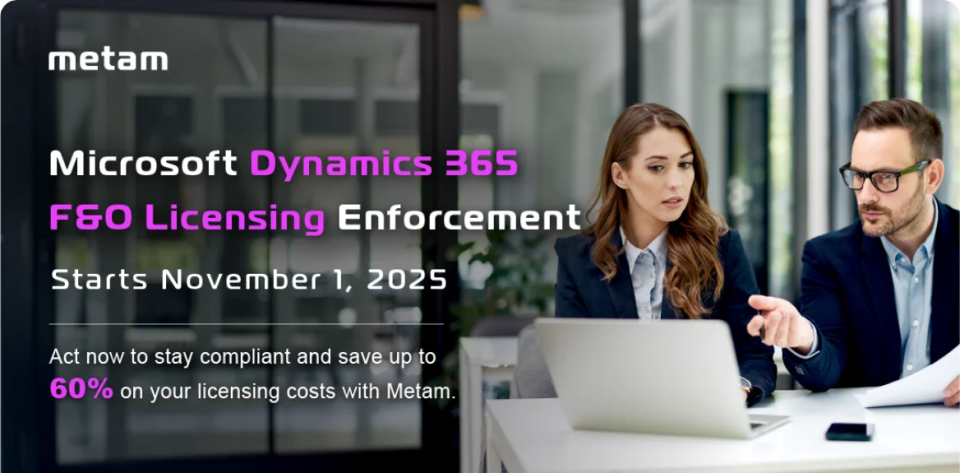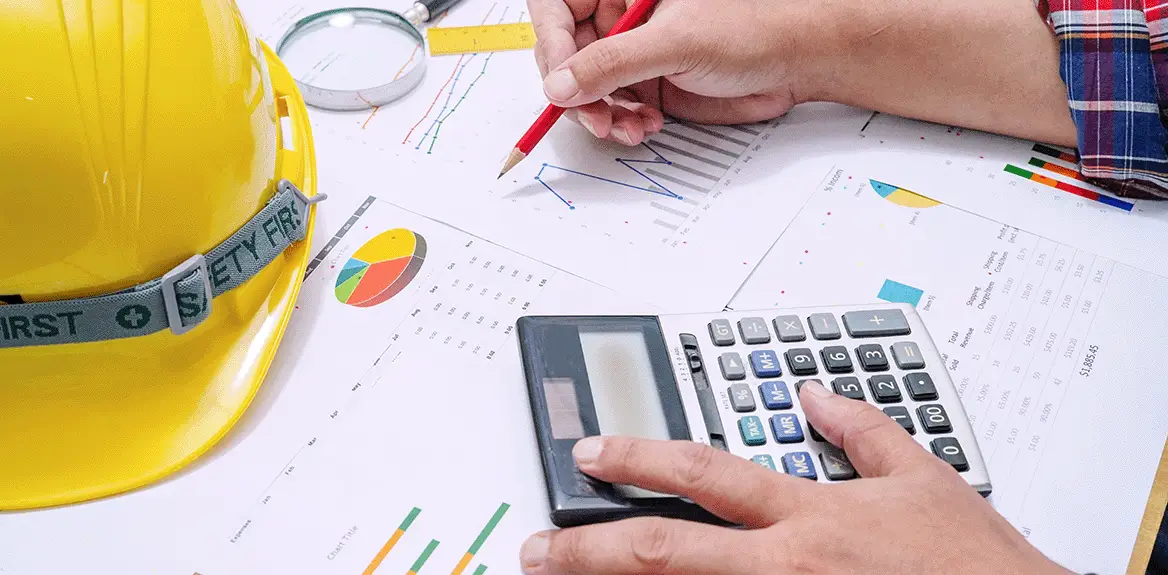From laggards to leaders: Transforming legacy construction firms for a sustainable future
By Metam

Abstract
Legacy construction firms face growing pressure to adopt sustainable practices. This article provides a comprehensive roadmap from laggard to leader status, covering culture, governance, technology adoption, and ethics. It highlights role-based strategies and how Metam Technologies supports scalable transformation.

Legacy construction firms can stop playing catch-up—by adopting a structured sustainability transformation, they can become industry trailblazers. This shift is no longer optional; it is a critical business imperative as global mandates, investor expectations, and market dynamics push for greener, smarter operations. Firms that hesitate risk losing competitive advantage, stakeholder trust, and regulatory compliance. However, many legacy firms struggle with outdated processes, fragmented sustainability efforts, and limited executive buy-in, making transformation a complex challenge that requires thoughtful planning.
Sustainability transformation requires more than just green policies—it demands culture change, strategic governance, and technology integration. Without clear roadmaps and role-specific playbooks, firms risk slow progress and missed opportunities that can affect profitability and market relevance.
This article offers an in-depth exploration of how legacy construction companies can evolve into sustainable leaders by integrating culture, governance, technology, and ethics into their core operations, ensuring long-term resilience and growth.
What differentiates sustainable leader firms from legacy laggards?
Understanding what sets sustainable leaders apart provides valuable insights for legacy firms aiming to transform. These differentiators span culture, governance, technology, and market positioning, creating a holistic competitive advantage that fosters both environmental responsibility and business success.
Culture and values
Sustainable leaders embed environmental and social responsibility into daily operations. Sustainability is part of decision-making, not an afterthought. Employees at all levels understand and live these values, fostering a proactive mindset toward reducing waste, conserving resources, and minimizing carbon footprints. This cultural integration drives consistent behavior change and innovation, enabling firms to identify and act on sustainability opportunities faster than competitors.
In contrast, laggards treat sustainability as a compliance or marketing exercise, resulting in fragmented efforts and low engagement. Leaders invest in ongoing culture-building activities—training, incentives, and communication—that reinforce sustainability as a core value. By making sustainability a shared mission, firms encourage ownership and accountability throughout the organization, turning values into measurable action.
This cultural embedment improves resilience and innovation, empowering teams to identify green opportunities organically. Competitor content often overlooks detailed culture-shaping techniques, which are crucial for lasting transformation. Addressing this gap can differentiate firms as thought leaders and change agents in the built environment.
Governance maturity
Mature governance frameworks characterize leader firms. They establish measurable Environmental, Social, and Governance (ESG) KPIs aligned with industry standards and regulatory requirements. Sustainability committees with cross-functional membership ensure accountability and progress tracking across departments. This governance structure supports transparent decision-making and timely responses to emerging risks.
Leaders incorporate sustainability into board agendas and executive scorecards, signaling commitment from the top. Transparent reporting systems provide stakeholders with reliable data on environmental impacts and social outcomes, enhancing trust and compliance. Embedding sustainability into governance transforms it from a peripheral concern into a strategic imperative.
Legacy laggards may lack structured governance or have isolated sustainability roles without decision-making power. This gap creates inconsistent efforts and limits impact. Filling this gap with practical governance models and committee charters strengthens transformation credibility. Clear accountability mechanisms also help firms meet increasing demands from regulators and investors.
Tech and process integration
Digital integration is a hallmark of leader firms. Building Information Modeling (BIM), digital twins, and carbon analytics are embedded into workflows, enabling data-driven sustainability decisions. These technologies allow real-time tracking of resource use, emissions, and project performance, improving accuracy and responsiveness.
Leaders automate data collection, reporting, and compliance tracking, reducing errors and freeing resources for strategic initiatives. Integrated systems connect project management, procurement, and sustainability teams seamlessly, fostering collaboration and efficiency. This technological maturity also supports scenario planning and risk mitigation.
Many legacy firms rely on manual processes or disconnected tools, creating data silos and inefficiencies. Highlighting technology adoption roadmaps and case studies of successful integration addresses a significant gap in existing resources. Providing clear guidance on system interoperability and digital skill development is essential for effective transformation.
Market positioning & profitability
Sustainable leaders leverage their environmental credentials to access green financing, government incentives, and premium market segments. Investors increasingly value ESG performance, impacting firm valuation positively and attracting long-term capital. This market positioning creates new business opportunities and differentiates firms in competitive bids.
Leaders achieve higher profit margins by reducing waste, optimizing resource use, and enhancing brand reputation. They also experience improved bid success by meeting strict client sustainability requirements, which are becoming standard in many jurisdictions. Sustainability thus becomes a driver of profitability, not just compliance.
Legacy laggards risk losing contracts and market share due to weak sustainability positioning. Offering concrete examples of green funding mechanisms and profitability impact enriches the strategic perspective for transformation. Firms that fail to act may face increased financial and reputational risks as market expectations evolve rapidly.
How can legacy firms map their sustainability transformation journey?
Mapping a structured journey helps legacy firms transition methodically, reducing risk and increasing buy-in across the organization. A clear roadmap provides focus, aligns stakeholders, and guides investment decisions over time.
Audit & maturity assessment
The transformation begins with a thorough baseline assessment covering culture, technology adoption, and governance maturity. This audit identifies strengths, weaknesses, and gaps relative to industry benchmarks. It provides a clear starting point and prioritizes areas needing immediate attention.
Culture assessments include employee surveys, leadership interviews, and behavior observations to gauge sustainability awareness and engagement. Technology audits review current tools for carbon tracking, BIM use, and digital workflows, evaluating integration and usability. Governance reviews analyze ESG KPIs, committee structures, and reporting mechanisms for completeness and effectiveness.
Competitors often neglect detailed, role-specific audit methodologies. Providing a sample assessment framework enhances practical guidance and empowers firms to initiate data-driven transformation confidently. This step also uncovers hidden barriers and opportunities that inform the overall strategy.
Strategic roadmap phases
Transformation unfolds in phased stages designed to balance momentum with sustainable adoption:
Pilot: Small-scale sustainability initiatives test concepts and build momentum. Focus on high-impact projects with measurable KPIs to demonstrate value and refine approaches. Pilots allow experimentation with limited risk and resource investment.
Scale: Successful pilots expand organization-wide with dedicated resources, formalized governance, and integrated technology. This phase requires robust change management and clear communication to maintain engagement.
Embed: Sustainability becomes ingrained in business processes, culture, and strategy, with continuous improvement mechanisms ensuring adaptation to evolving standards. Performance is regularly reviewed, and best practices are institutionalized.
This phased approach balances quick wins with sustainable growth, mitigating change resistance and reducing operational disruption.
Stakeholder alignment
Alignment across all stakeholder levels is critical. Board sponsorship signals strategic priority and secures resources. Leadership must communicate vision and resources clearly and consistently to all employees. Inclusive engagement builds trust and breaks down silos.
Site and operations teams require tailored engagement to embed new practices effectively. These teams are often closest to execution and can provide vital feedback. Regular feedback loops ensure concerns are addressed, fostering ownership and accountability.
Competitor articles often miss detailed stakeholder communication plans. Including communication templates and meeting structures adds tangible value. Strong alignment reduces implementation risks and accelerates transformation velocity.
Change leadership and communication plan
Effective transformation demands robust change management. Leaders develop communication plans that articulate why sustainability matters, how it benefits the firm, and what success looks like. Messaging must be consistent, transparent, and tailored to diverse audiences.
Storytelling, data visualization, and transparent progress updates build trust and enthusiasm across the organization. Highlighting early wins sustains momentum. Training programs address skill gaps and empower employees to act sustainably.
A comprehensive communication plan reduces skepticism and sustains momentum through challenges. It creates a shared purpose that aligns efforts from the boardroom to the job site.
What role-based playbooks accelerate transformation?
Tailored playbooks clarify expectations and empower specific teams to drive transformation effectively. This section details playbooks for executives, operations, ESG teams, and technology/data professionals, addressing their unique challenges and responsibilities.
Executive playbook
Executives focus on building a clear business case linking sustainability to ROI, risk mitigation, and competitive advantage. They craft narratives that resonate with investors, regulators, and clients, emphasizing long-term value creation.
Playbooks guide executives on securing green investments, aligning sustainability with financial goals, and championing transformation in board discussions. They also address managing external stakeholder relations, including investors and regulators, ensuring alignment with evolving expectations.
Providing sample ROI models and board presentation templates fills a critical content gap. Empowered executives can better lead change and embed sustainability as a strategic priority.
Operational teams
Operations teams translate strategy into daily practices. Playbooks specify new site routines, waste reduction protocols, and energy conservation measures to drive tangible improvements.
Training curricula develop competencies in sustainable construction methods and safety. Performance targets link individual and team goals to sustainability KPIs, incentivizing behavior change and continuous improvement.
Competitors often omit detailed operational guidance, making this an opportunity to lead with actionable tools. Clear instructions and measurable goals help embed sustainability at the frontline.
ESG sustainability teams
ESG teams require systems to collect data, ensure compliance, and prepare certifications such as LEED or ISO 14001. Playbooks outline best practices for data management, audit preparation, and stakeholder reporting.
Training ensures teams remain current on evolving standards and technologies, fostering professionalism and credibility. Collaborative tools facilitate data sharing and cross-team coordination.
Including process flowcharts and certification timelines enhances usability. This clarity improves compliance and external validation efforts.
Technology & data teams
Technology teams lead digital adoption critical to transformation. Playbooks guide on integrating BIM workflows, deploying digital twins, and automating carbon analytics to improve project outcomes and sustainability reporting.
They also cover data governance policies and cybersecurity best practices to protect sensitive information and maintain integrity.
Technical training plans support upskilling and knowledge sharing, fostering a culture of innovation and continuous learning.
Filling the gap on detailed tech adoption plans distinguishes this content, offering firms a roadmap for successful digital transformation.
How should legacy firms integrate tech & ethics into transformation?
Technology adoption must be paired with ethical considerations and workforce trust to ensure sustainable success. This section covers data-led decision-making and ethical AI integration, highlighting best practices and real-world examples.
BIM, digital twin, carbon analytics and Data-led sustainability decisions
Advanced digital tools enable real-time insights into energy consumption, carbon emissions, and material efficiency. BIM and digital twins simulate design alternatives and operational scenarios, optimizing sustainability outcomes and identifying risks before construction begins.
Carbon analytics track emissions throughout project lifecycles, supporting reporting and reduction strategies. This data transparency supports regulatory compliance and stakeholder confidence.
Competitors often highlight technology benefits but miss detailed use cases or integration steps. Providing examples of dashboards and decision workflows fills this gap, helping firms translate data into action.
AI adoption with workforce trust
AI applications support predictive maintenance, risk identification, and resource optimization. Ethical AI frameworks ensure transparency, fairness, and employee privacy, addressing concerns around automation and data use.
Training programs build workforce trust by demystifying AI and addressing concerns, reducing resistance and fostering collaboration. Inclusive adoption models encourage feedback and iterative improvements.
Highlighting behavioral and ethical considerations alongside technical adoption addresses a critical unmet need, preparing firms for responsible AI integration.
Data governance & transparency
Robust data governance policies secure data integrity, privacy, and compliance. Transparent sharing of sustainability metrics fosters trust internally and with external stakeholders, enhancing reputational capital.
This openness promotes accountability and continuous improvement, enabling firms to benchmark progress and respond to challenges proactively.
Including examples of data governance charters and transparency reports adds depth, illustrating best practices for emerging industry standards.
Continuous feedback systems
Ongoing feedback mechanisms monitor cultural shifts and identify areas needing reinforcement. Behavioral surveys and culture scorecards provide quantitative and qualitative insights, informing targeted interventions.
Integrating these systems into governance frameworks ensures responsiveness and agility, allowing firms to adapt quickly to internal and external changes.
This forward-looking approach to culture management is often absent from competitor content, positioning firms for sustainable long-term success.
How Metam Technologies accelerates transformation for AEC legacy firms?
Metam partners with legacy construction firms to unlock sustainable leadership through a pragmatic, data-driven approach.
Metam supports construction firms through comprehensive sustainability transformations by combining culture, governance, technology adoption, and ethical frameworks into an integrated consulting approach.
Their strategy begins with deep diagnostic assessments to benchmark current maturity levels, enabling customized roadmaps tailored to each firm’s unique challenges and goals. This ensures transformation efforts are both strategic and measurable.
Transformation maturity assessment and strategic roadmap
Metam works closely with firms to evaluate cultural readiness, governance frameworks, and technology integration, creating a clear picture of strengths and gaps. This diagnostic phase is critical for building phased, actionable roadmaps that balance quick wins with long-term embedding of sustainable leadership principles. The roadmaps prioritize practical milestones and KPIs to track progress and secure executive buy-in.
Role-based change leadership and stakeholder alignment
Recognizing the complexity of legacy firms, Metam emphasizes role-specific playbooks that clarify responsibilities for leadership, operations, ESG teams, and technology managers. Through facilitated workshops and coaching sessions, they build alignment across stakeholders and foster a sustainability culture that permeates all levels of the organization. This coordinated approach drives accountability and accelerates adoption.
Embedding ethics and workforce readiness into technology adoption
Metam integrates ethical considerations into technology strategies by advising on responsible AI adoption, transparency, and data governance. Their consulting frameworks ensure that digital tools are introduced in ways that earn workforce trust and support cultural transformation. This holistic focus on people alongside process and tech is crucial to sustaining change.
Continuous improvement through feedback and adaptive governance
To keep transformation on track, Metam implements systems for ongoing feedback, including culture surveys, behavior scorecards, and governance reviews. These tools provide actionable insights for refining strategies and addressing emerging challenges. This adaptive governance model supports resilience and continuous sustainability performance improvement.
Through expert consulting and proven strategic frameworks, Metam enables legacy construction firms to successfully bridge the gap from laggard status to sustainable leaders in the built environment.
Key Takeways
Legacy construction firms can bridge the gap to sustainability leadership through a structured transformation roadmap combining culture, governance, technology, and ethics. This holistic approach creates durable competitive advantages.
Pragmatic, data-driven approach: Metam begins with in-depth maturity assessments across culture, governance, and technology to create tailored transformation roadmaps that address each firm’s unique challenges and goals.
Role-based playbooks and stakeholder alignment: By developing clear, role-specific playbooks and facilitating workshops, Metam ensures leadership, operations, ESG, and technology teams are aligned and accountable, accelerating sustainable adoption at every level.
Integrated culture, governance, technology, and ethics: Metam’s holistic consulting approach embeds sustainability into core business operations, combining strategic governance frameworks, advanced digital tools (BIM, digital twins, AI), and ethical workforce readiness for lasting impact.
Continuous improvement and adaptive governance: Through ongoing feedback systems—culture surveys, behavior scorecards, and governance reviews—Metam helps firms monitor progress, adapt strategies, and maintain momentum toward sustainable leadership.
Bridging the gap from laggard to leader: Leveraging proven frameworks and expert guidance, Metam empowers legacy construction firms to confidently navigate complex sustainability challenges, secure competitive advantage, and build resilient, future-ready operations.


